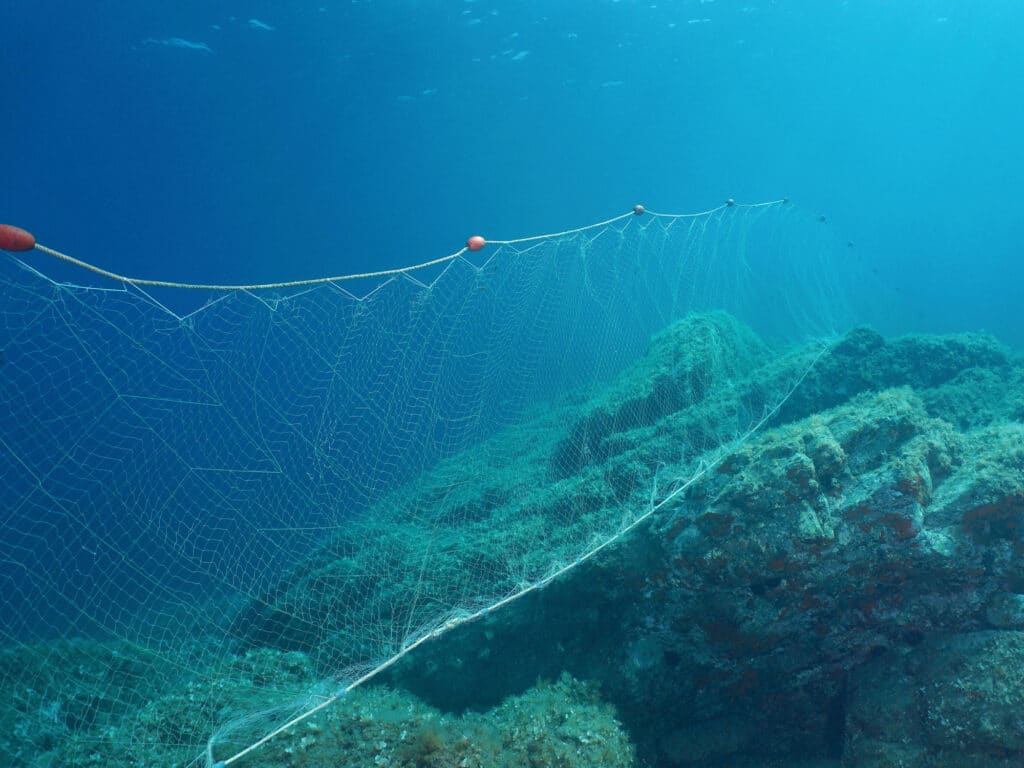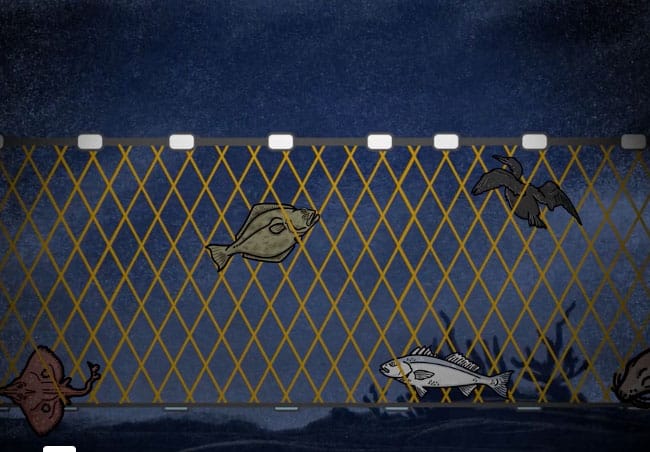
Three non-profit major marine conservation organizations are now urging the California Fish and Game Commission to find alternative commercial fishing methods to replace set gillnets in waters off the state’s southern coast. Lending impetus to this issue is a report just released by Oceana and Turtle Island Restoration Network (TIRN) finding that the commercial set gillnet fishery targeting California halibut and white seabass off Southern California is threatening the health and diversity of the ocean ecosystem. The topic is set for consideration by Commission’s Marine Resources Committee (MRC) meeting on July 20, 2023.
“The set gillnet fishery targeting California halibut and white seabass is clearly a risk to the health and resilience of California’s oceans,” said Caitlynn Birch, Pacific marine scientist with Oceana, which is based in Monterey, California. “These nets injure and kill a myriad of ocean animals, including rare and vulnerable species. Despite a history of wildlife impacts and action by California voters, the fishery remains largely unmonitored as these nets continue to hurt wildlife off Southern California.”
64 Percent Bycatch
This fishery throws overboard 64 percent of the animals caught, which is among the highest bycatch rates of any fishery in the country, according to the report. These nets set along the ocean floor can be as long as a mile, and they indiscriminately catch more than 125 different species of ocean animals, including marine mammals, seabirds, sharks, rays, skates, and other fish that migrate, feed, and reproduce in the ocean waters off Southern California, the report states. It goes on to say that more than half of the animals thrown overboard are already dead or dying when they hit the water — raising significant concerns over the fishery’s impact on marine biodiversity.
“We are asking the state of California to walk the talk regarding being a global leader in the biodiversity crisis,” said Scott Webb, advocacy and policy director with TIRN based in Olema, California. “As climate change continues to create a harsher environment for many of these vulnerable marine species, specifically sharks and whales, stronger protections are needed.”

Alternate Gear
The Coastal Conservation Association of California (CCA Cal) is also asking the California Fish and Game Commission to consider alternatives to set gillnets used by commercial fishermen. “California halibut and white sea bass can be targeted with more selective gear, including hook-and-line gear, greatly reducing bycatch and eliminating harm to marine mammals and sea turtles, as well as non-target fish species,” said Mark Smith, lobbyist for CCA Cal, in recent public testimony before the Commission asking for elimination of set gill nets in all waters off the coast of California.
Read Next: Biden Bans Swordfish Drift Gillnets in US
Chance to Speak Out
The next opportunity for the public to speak out (both in person and via virtual conferencing) regarding California’s commercial set gillnet fishery will be July 20, 2023, when the Commission’s MRC will convene in Petaluma, California, to discuss a number of agenda items including evaluation of bycatch in the commercial set gillnet fishery. In addition to public comments, the MRC will hear the California Department of Fish and Wildlife evaluation of fisheries bycatch and provide the MRC with recommended next steps for developing recommendations. To learn more, visit fgc.ca.gov/Meetings/2023.
During the MRC meeting, Oceana and TIRN are expect summarize their set gillnet bycatch report, which has found that 75 percent of sharks, skates, and rays that are caught are tossed overboard; gillnets are the primary threat to juvenile great white sharks in their nursery grounds off California; California gray whales and humpback whales are susceptible to entanglement in set gillnets; set gillnet fishermen throw back as waste damaged and undersized California halibut, rock crab, sand bass, and lingcod. To download the full report, visit oceana.org/reports/the-net-consequence-impacts-of-set-gillnets-on-california-ocean-biodiversity.
Set Gillnet History
California set gillnets were originally banned in Northern California waters back in 1915. In 1990, after Southern Californian sport fishermen noticed major declines in fish populations over the previous decade, anglers, conservation organizations, and elected officials worked together to pass Proposition 132, which prohibited the use of set gillnets within state waters off Southern California (within 3 nautical miles of the coast). However, set gillnets are still being used in federal waters, offshore banks, and in certain areas around Southern California’s Channel Islands.









